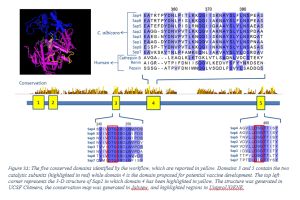Bioinformatics Against Viruses: The Case of SARS-CoV-2

At the end of July 2020, an article by American researchers was published, detailing the development of a computational bioinformatics process designed to identify viral targets for therapy or vaccination. Using the example of the SARS-CoV-2 coronavirus, which causes COVID-19, the article outlines all the steps of this process. The authors explain how this process can be adapted for other infectious agents. Importantly, it is accessible to a wide range of students, as it does not require deep bioinformatics knowledge and is based on open-source software.
We are pleased that our open platform, UGENE, has proven useful in this new computational process and is utilized in two of its six stages, alongside three other bioinformatics systems. UGENE is used for the visualization and analysis of viral genome sequence alignments, as well as for filtering candidate sequences. In addition to obtaining specific results, this process helps students grasp several key concepts of medical virology.
UGENE has long been successfully used by virologists around the world, aiding in the identification of new viruses, comparative analysis, and the search for new methods to combat dangerous infections.
